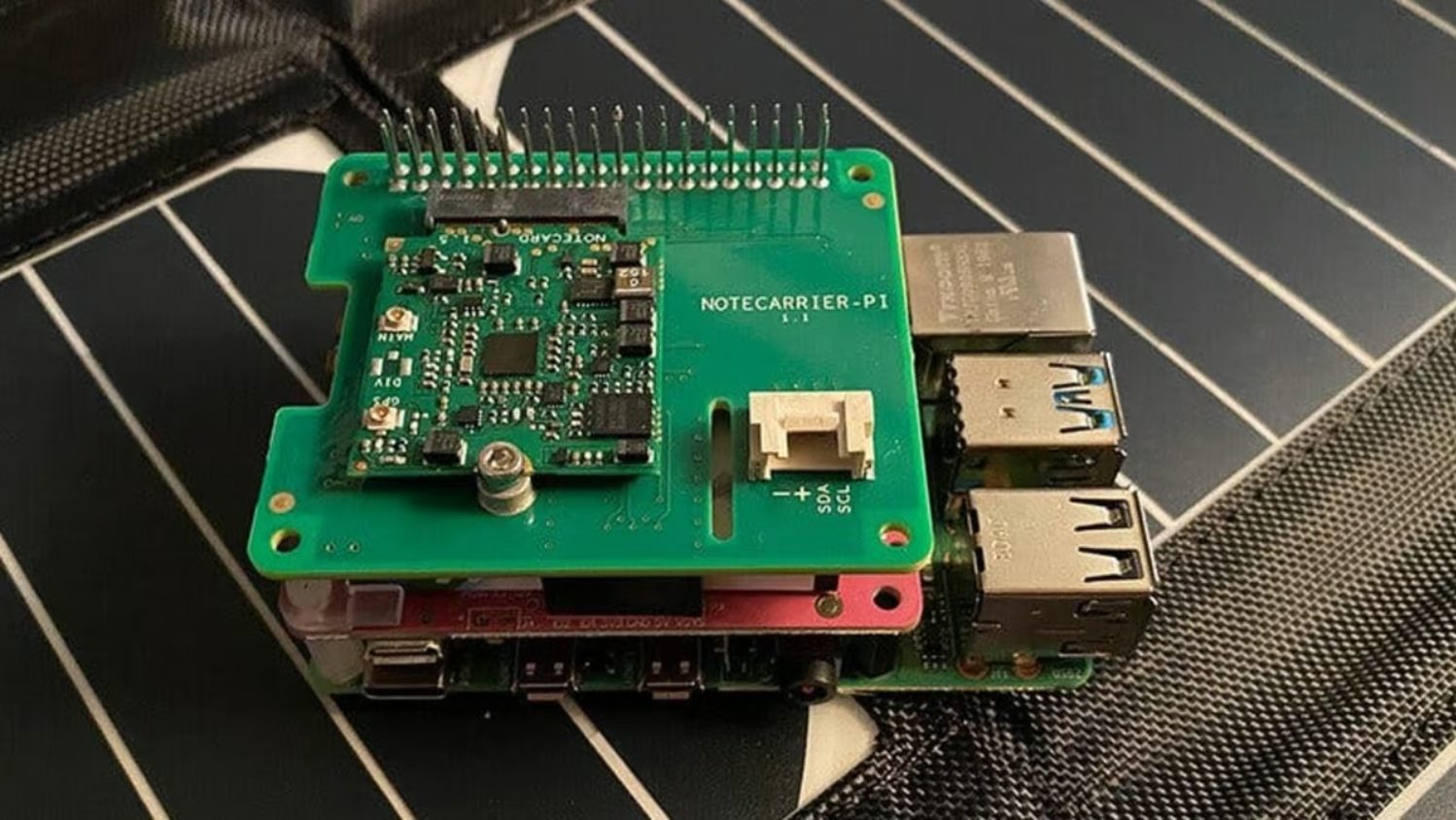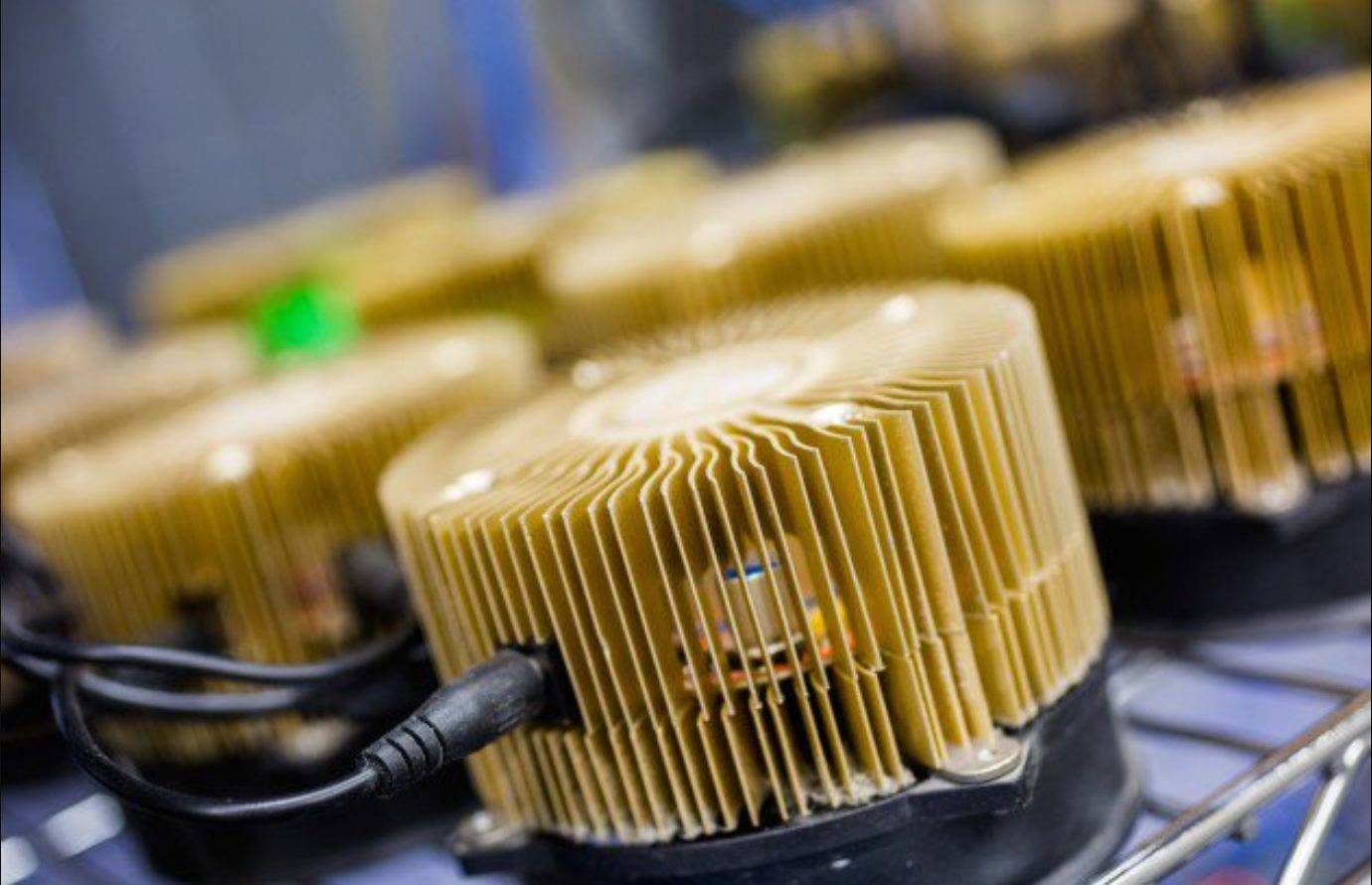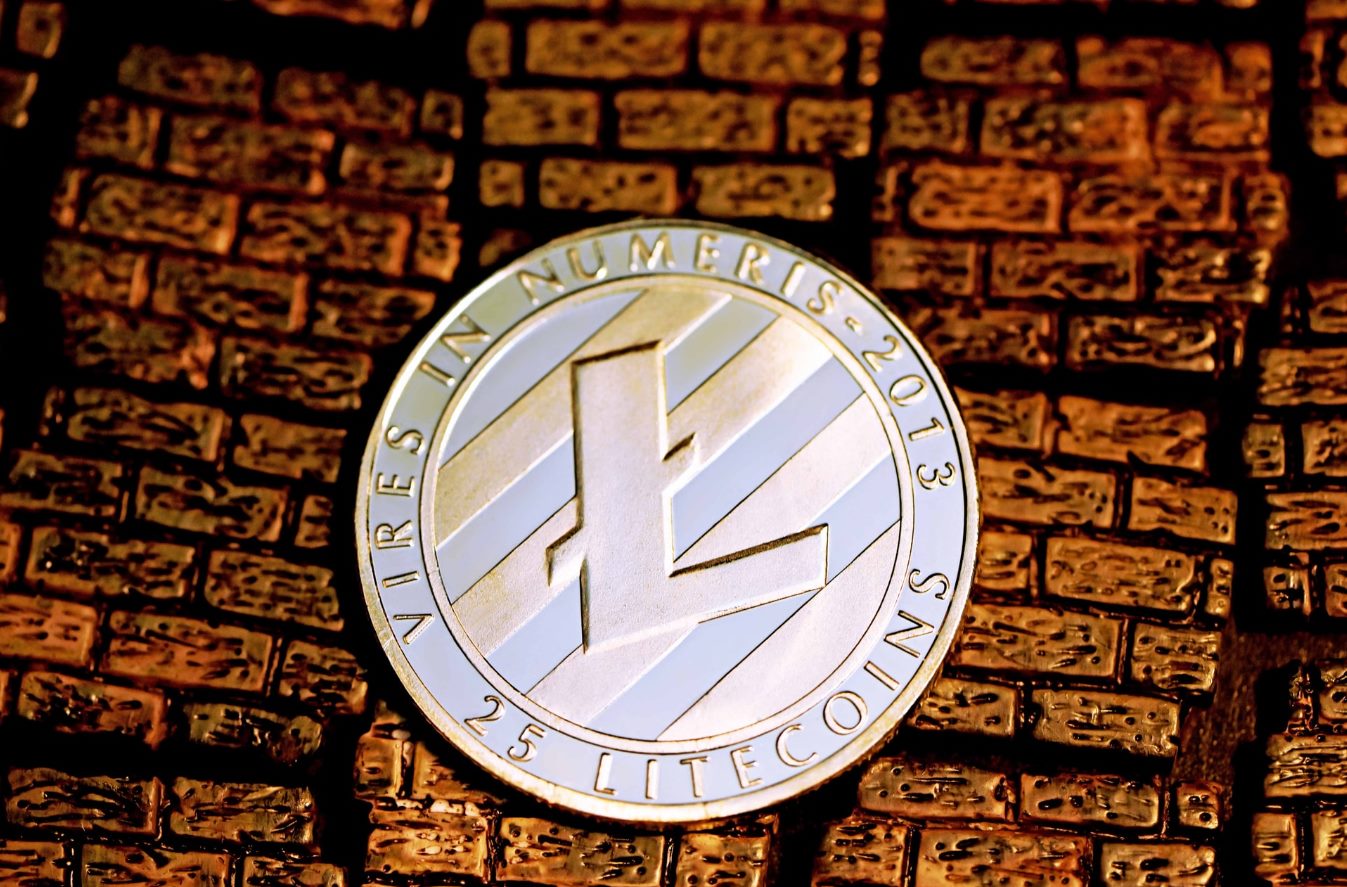Introduction
Welcome to the world of Litecoin, a digital cryptocurrency that offers an alternative to traditional currencies. In recent years, cryptocurrencies have gained popularity and become more mainstream, with Bitcoin leading the way. However, Litecoin has emerged as a worthy contender, offering several advantages over its counterparts. If you’re interested in earning Litecoin, you’ve come to the right place.
Litecoin was created in 2011 by Charlie Lee, a former Google engineer. It was designed to be a faster and more efficient version of Bitcoin. While Bitcoin takes around 10 minutes to confirm a transaction, Litecoin does it in just 2.5 minutes. This makes it more suitable for everyday transactions and brings benefits like faster confirmation times and lower fees.
Like any other cryptocurrency, you’ll need a wallet to store your Litecoin securely. Setting up a Litecoin wallet is easy and can be done through various wallet providers online. Once you have your wallet set up, you’re ready to start earning Litecoin.
There are several methods to earn Litecoin. One of the most common ways is mining, where you use powerful computers to solve complex mathematical problems and earn rewards in the form of Litecoin. However, mining requires significant hardware and electricity costs, making it less practical for individual users.
If mining is not your cup of tea, you can try Litecoin faucets, which are websites that give out small amounts of Litecoin for completing simple tasks or captchas. While the rewards might be small, it’s a low-effort way to accumulate some Litecoin over time.
If you’re feeling lucky, you can explore Litecoin gambling. Several online casinos and gambling platforms accept Litecoin as a form of payment. However, always remember to gamble responsibly and only use funds you’re willing to lose.
Another option is Litecoin trading, where you buy and sell Litecoin on cryptocurrency exchanges. This method requires some knowledge and understanding of market trends, but it can be a lucrative way to earn Litecoin if done correctly.
If you have a skill or expertise in a particular field, you can offer your services as a freelancer and get paid in Litecoin. Many online platforms and marketplaces support cryptocurrency payments, opening up opportunities for freelancers to earn Litecoin.
Lastly, affiliate marketing can be a profitable way to earn Litecoin. By promoting products or services through your own website or social media platforms and earning a commission for each successful referral, you can accumulate Litecoin over time.
Earning Litecoin is not only limited to these methods, and exploring different avenues can lead to new opportunities. So, whether you’re looking for a side hustle, seeking financial independence, or simply intrigued by the world of cryptocurrencies, earning Litecoin could be a fascinating journey for you.
What is Litecoin?
Litecoin is a peer-to-peer digital currency that was created in 2011 by Charlie Lee, a former Google engineer. It is based on blockchain technology, similar to Bitcoin, but with a few key differences that make it unique. Litecoin is often referred to as “silver” compared to Bitcoin’s status as “gold.”
At its core, Litecoin functions as a decentralized and open-source cryptocurrency that enables fast and secure transactions. It utilizes cryptographic algorithms to secure the network, verify transactions, and ensure the integrity of the currency’s supply.
One of the main advantages of Litecoin is its speed. While it takes about 10 minutes for a Bitcoin transaction to be confirmed on the blockchain, Litecoin has a much shorter block generation time of approximately 2.5 minutes. This means that transactions can be processed more quickly, making Litecoin more suitable for everyday transactions and increasing its potential as a digital currency for daily use.
Another notable difference between Litecoin and Bitcoin is the use of a different hashing algorithm. While Bitcoin uses the SHA-256 algorithm, Litecoin utilizes Scrypt. This algorithm was specifically designed to be more memory-intensive, making it less susceptible to specialized mining hardware known as ASICs. The intention behind this was to create a more level playing field for miners, allowing individuals to participate without the need for expensive and specialized equipment.
In terms of supply, Litecoin has a maximum cap of 84 million coins, which is four times higher than Bitcoin’s supply. This larger supply allows for more widespread distribution and increased liquidity, which can potentially contribute to price stability.
Litecoin has gained recognition and acceptance by numerous merchants and online platforms as a form of payment, similar to Bitcoin. Many businesses, both online and offline, now accept Litecoin as an alternative payment option, expanding the usability and adoption of the cryptocurrency.
Overall, Litecoin offers a faster transaction speed, increased supply, and a different hashing algorithm compared to Bitcoin. These features, along with its growing acceptance as a payment option, contribute to Litecoin’s unique position within the cryptocurrency market.
Setting Up a Litecoin Wallet
If you’re looking to earn or store Litecoin, you’ll need a Litecoin wallet to securely manage your coins. A wallet acts as a digital storage space for your Litecoin, allowing you to send, receive, and manage your funds.
Setting up a Litecoin wallet is a relatively straightforward process. There are several types of wallets available, each with its own advantages and features. Here are some popular options:
1. Software Wallets
Software wallets are applications that you can install on your computer, smartphone, or tablet. They give you complete control over your keys and provide secure storage for your Litecoin. Popular software wallets for Litecoin include Exodus, Atomic Wallet, and Litecoin Core.
2. Web Wallets
Web wallets are online wallets that you can access through a web browser. These wallets are convenient as you can access them from any device with an internet connection. However, since your private keys are stored online, web wallets may carry a slightly higher security risk compared to other wallet types. Examples of web wallets for Litecoin include LiteVault and Coinomi.
3. Hardware Wallets
Hardware wallets are physical devices designed specifically for securely storing cryptocurrencies. These wallets offer the highest level of security as they store your private keys offline. Some popular hardware wallet brands that support Litecoin include Ledger and Trezor.
4. Paper Wallets
Paper wallets are offline wallets printed onto physical paper. They typically include a public address and private key that you can use to access your Litecoin. Paper wallets offer a secure way to store your cryptocurrency as they are not vulnerable to online attacks. However, it’s important to keep your paper wallet safe and protected from physical damage. You can generate and print paper wallets using services like LiteAddress.
Once you have decided on a wallet type, follow these general steps to set up your Litecoin wallet:
A. Download and Install
If you’re using a software wallet, download the wallet application from the official website or app store. Follow the installation instructions provided and ensure that you download the wallet from a trusted source.
B. Generate a New Wallet
When setting up a new wallet, you will generally be prompted to generate a new wallet or create a new account. The wallet will generate a unique public address and a corresponding private key for you to access your Litecoin.
C. Secure Your Wallet
Take precautions to secure your wallet by setting a strong, unique password. Enable any additional security features offered by the wallet, such as two-factor authentication or biometric authentication if available.
D. Backup Your Wallet
Back up your wallet by following the instructions provided by the wallet software. This typically involves saving a copy of your wallet’s recovery seed or private keys in a secure offline location. In case of device loss or failure, you can use the backup to restore your wallet and access your Litecoin.
Once your wallet is set up and secured, you’re ready to start receiving and sending Litecoin. Your wallet will provide you with a receive address that you can share with others to receive funds. To send Litecoin, you’ll need the recipient’s Litecoin address.
Remember to always keep your wallet software up to date and be cautious of phishing attempts or suspicious links. Keeping your wallet secure is crucial to ensure the safety of your Litecoin holdings.
Mining Litecoin
Mining Litecoin is one of the ways to earn Litecoin. It involves using specialized hardware and software to solve complex mathematical algorithms, which in turn contributes to the security and operation of the Litecoin network.
Litecoin mining relies on a process called proof-of-work, where miners compete to be the first to solve the algorithm and add a new block to the blockchain. When a miner successfully solves the algorithm, they are rewarded with a certain amount of Litecoin as an incentive for their contribution.
Here are the key steps involved in mining Litecoin:
1. Acquire Mining Hardware
Litecoin mining requires specialized hardware, such as ASIC (Application-Specific Integrated Circuit) miners. These devices are designed specifically for mining cryptocurrencies and offer higher efficiency and performance compared to general-purpose computer hardware. Popular ASIC miners for Litecoin include models from manufacturers like Bitmain and Innosilicon.
2. Set Up Mining Software
Once you have your mining hardware, you’ll need to install mining software on your computer. There are various mining software options available, such as CGMiner, EasyMiner, and BFGMiner. These software programs allow you to connect your mining hardware to the Litecoin network and start mining.
3. Join a Mining Pool
While it is possible to mine Litecoin individually, the mining difficulty has increased significantly over time, making it less profitable for solo miners. Joining a mining pool allows you to combine your resources with other miners and increase your chances of earning consistent rewards. In a mining pool, each miner contributes their computing power, and the rewards are divided among the participants based on their contributions.
4. Configure Mining Settings
Once you’ve joined a mining pool, you’ll need to configure your mining settings. This includes specifying your mining hardware, pool information, and other parameters. The mining software you’re using should provide documentation or a user interface to help you with the configuration process.
5. Start Mining
With your mining hardware set up, software installed, and mining pool configured, you can now start mining. The software will begin performing calculations to solve the mathematical algorithms, and you’ll start earning rewards in the form of Litecoin.
It’s important to note that mining Litecoin has become more competitive over time, requiring increasingly powerful hardware to stay profitable. Electricity costs also play a significant role, as mining requires a significant amount of energy. It’s essential to do thorough research and consider factors such as mining difficulty, equipment costs, and electricity rates before getting into Litecoin mining.
Additionally, mining Litecoin may not be suitable for everyone due to the initial investment and ongoing costs involved. However, for those with the necessary resources and technical expertise, mining can be a viable way to earn Litecoin and contribute to the security and stability of the Litecoin network.
Litecoin Faucets
If you’re looking for an effortless way to earn small amounts of Litecoin, Litecoin faucets can be a viable option. Litecoin faucets are websites or applications that reward users with a small amount of Litecoin for completing simple tasks or captchas. While the rewards may be relatively small, they can accumulate over time, allowing you to build up your Litecoin holdings without significant investment or effort.
The concept behind Litecoin faucets is quite simple. Faucet owners typically generate revenue through advertisements displayed on their websites or apps. They use a portion of this revenue to distribute small amounts of Litecoin to users as a reward for their engagement.
Here’s how you can get started with Litecoin faucets:
1. Find Reputable Faucets
There are numerous Litecoin faucets available, but it’s important to choose reputable ones that actually pay out rewards. Look for faucets with positive user reviews and a history of consistent payments. Faucet directories and forums can be helpful resources for finding reliable faucets.
2. Create a Litecoin Wallet
Before you start using a Litecoin faucet, you’ll need a Litecoin wallet to receive your earned Litecoin. There are various wallet options available, including software wallets, web wallets, and hardware wallets. Choose one that suits your needs and ensure you have your wallet address available.
3. Complete Tasks or Captchas
Litecoin faucets typically require you to complete tasks or solve captchas to earn rewards. These tasks can include watching advertisements, playing games, filling out surveys, or clicking on links. The tasks are usually straightforward and require minimal effort.
4. Claim Your Rewards
Once you’ve completed the required task or captcha, you can claim your rewards. The Litecoin faucet will typically transfer the earned Litecoin directly to your linked wallet address. Some faucets have a minimum withdrawal threshold, so make sure to reach that threshold before attempting to withdraw your earnings.
5. Be Mindful of Time Restrictions
Litecoin faucets often have time restrictions on how frequently you can claim rewards. For example, some faucets allow you to claim every few minutes, while others have hourly or daily limits. It’s important to be aware of these restrictions and plan your faucet usage accordingly.
While Litecoin faucets can be an easy way to accumulate small amounts of Litecoin, it’s important to keep in mind that the earnings are relatively modest. However, faucets can still be a fun and educational way to learn about cryptocurrencies and the mechanics of blockchain transactions.
As with any online activity, it’s essential to exercise caution and be mindful of potential scams or fraudulent faucets. Stick to reputable faucets and be wary of any faucets that ask for personal information or require you to make investments.
Overall, if you’re looking for a low-effort way to earn some Litecoin, exploring Litecoin faucets can be an interesting option. Just remember that the earnings are modest, and it’s always important to prioritize security and protect your personal information.
Litecoin Gambling
If you enjoy the thrill of gambling and want to try your luck with Litecoin, you’ll be pleased to know that there are several online casinos and gambling platforms that accept Litecoin as a form of payment. Litecoin gambling offers a convenient and secure way to enjoy various casino games and potentially win Litecoin rewards.
Here’s what you need to know about Litecoin gambling:
1. Find Reliable Litecoin Casinos
Before diving into Litecoin gambling, it’s crucial to find reputable and trustworthy Litecoin casinos or gambling platforms. Look for platforms with a good reputation, positive user reviews, proper licensing, and a wide selection of games. Doing thorough research will help ensure a safe and enjoyable gambling experience.
2. Create a Litecoin Wallet
To get started with Litecoin gambling, you’ll need a Litecoin wallet to store and manage your Litecoin funds. Make sure to choose a reliable and secure wallet that supports Litecoin transactions. This will be the wallet from which you deposit Litecoin into your gambling account and receive any winnings.
3. Deposit Litecoin into Your Gambling Account
Once you have a Litecoin wallet, you can deposit Litecoin into your gambling account. Most Litecoin gambling platforms provide a deposit address that you can use to transfer your Litecoin from your wallet. The deposit process is usually quick and straightforward, and the funds will be available for you to use in your gambling activities.
4. Choose Your Games
Litecoin gambling platforms offer a wide range of games, including popular options like slots, blackjack, roulette, poker, and more. Choose the games that you enjoy and are comfortable playing. Take the time to familiarize yourself with the rules and strategies to increase your chances of winning.
5. Gamble Responsibly
While gambling can be exciting, it’s essential to gamble responsibly. Set a budget for your gambling activities and stick to it. Remember that gambling is based on luck, and losing is a possibility. Avoid chasing losses and never gamble with more than you can afford to lose. Keep in mind that gambling should be seen as entertainment, not a way to make money.
6. Withdraw Your Winnings
If luck is on your side and you win some Litecoin while gambling, you can withdraw your winnings back to your Litecoin wallet. The process usually involves requesting a withdrawal from your gambling account and specifying your Litecoin wallet address. The winnings will then be transferred to your wallet.
It’s important to note that while Litecoin gambling provides an opportunity for entertainment and potentially winning Litecoin, it comes with risks. Just like any form of gambling, there is always the possibility of losing your funds. Therefore, it’s crucial to approach Litecoin gambling with caution and only gamble with what you can afford to lose.
Always ensure that you are using reputable and licensed Litecoin gambling platforms to mitigate the risk of scams or unfair practices. Additionally, make sure to familiarize yourself with any applicable laws or regulations regarding online gambling in your jurisdiction.
Remember to enjoy Litecoin gambling responsibly and view it as a form of entertainment rather than a way to make a consistent income.
Litecoin Trading
Trading Litecoin is a popular option for individuals who want to earn Litecoin by taking advantage of price fluctuations in the cryptocurrency market. Litecoin trading involves buying and selling Litecoin with the goal of making a profit based on the difference in price between when you buy and when you sell.
Here are the key aspects to consider when engaging in Litecoin trading:
1. Choose a Reliable Cryptocurrency Exchange
To start trading Litecoin, you’ll need to choose a reputable cryptocurrency exchange that supports Litecoin trading pairs. Look for an exchange with a good reputation, strong security measures, wide liquidity, and user-friendly interface. Some popular exchanges that support Litecoin trading include Coinbase, Binance, and Kraken.
2. Sign Up and Verify Your Account
Once you’ve chosen an exchange, you’ll need to sign up for an account. This usually requires providing your personal information and going through a verification process to comply with Know Your Customer (KYC) regulations. Verification may include submitting a copy of your identification document and a proof of address.
3. Deposit Funds into Your Exchange Account
After your account is verified, you can deposit funds into your exchange account. Depending on the exchange, you may be able to deposit fiat currencies (such as USD or EUR) or other cryptocurrencies to purchase Litecoin. Follow the instructions provided by the exchange to deposit funds into your account.
4. Place Litecoin Buy or Sell Orders
Once your funds are deposited, you can start trading Litecoin. Decide whether you want to buy or sell Litecoin based on your analysis of market trends and price movements. Place an order on the exchange platform, specifying the amount, price, and type of order (market or limit). A market order executes immediately at the current market price, while a limit order allows you to set a specific price at which you want to buy or sell.
5. Set Profit Targets and Stop Losses
To manage your trades effectively, it’s important to set profit targets and stop losses. Profit targets help you determine the point at which you want to sell your Litecoin to lock in profits. Stop losses, on the other hand, establish a price level at which you want to sell your Litecoin to limit potential losses. Setting these levels in advance helps protect your investment and allows for a more disciplined approach to trading.
6. Stay Informed and Analyze the Market
Successful trading requires staying informed about market trends and news that can impact the price of Litecoin. Keep up with the latest developments and use technical analysis or other trading strategies to make informed trading decisions. There are many resources available, including market analysis websites, trading indicators, and social media groups dedicated to cryptocurrency trading.
Remember that trading cryptocurrency, including Litecoin, comes with risks. Prices in the cryptocurrency market can be volatile, and it’s possible to incur losses. It’s important to approach trading with a well-defined strategy, risk management techniques, and the understanding that losses can occur.
Litecoin trading can be exciting and potentially profitable if done correctly. However, it requires knowledge, experience, and careful analysis. Gradually hone your trading skills, start with small amounts, and consider seeking advice from experienced traders before diving into larger trades.
Earning Litecoin Through Freelancing
If you have a skill or expertise in a particular field, freelancing can be a great way to earn Litecoin. Freelancing allows you to offer your services to clients on various online platforms and receive payments in the form of Litecoin. Here’s how you can start earning Litecoin through freelancing:
1. Identify Your Skills
Start by identifying your skills and strengths. Determine what services you can offer to clients that align with your expertise. Common freelance services include web development, graphic design, content writing, digital marketing, translation, and consulting. Choose services that you are passionate about and confident in delivering high-quality work.
2. Create an Online Portfolio
Building an online portfolio is crucial for showcasing your skills and attracting potential clients. Create a professional website or use portfolio platforms specifically designed for freelancers, such as Upwork, Freelancer, or Fiverr. Include samples of your work, client testimonials if available, and highlight your expertise in your chosen field.
3. Join Freelance Platforms
Join reputable freelance platforms that support cryptocurrency payments. Platforms like Bitwage, Freelance for Coins, and Coinality allow freelancers to receive payments in cryptocurrencies, including Litecoin. Explore these platforms, create a compelling profile, and start applying for freelance projects that match your skills.
4. Set Competitive Rates
When starting out as a freelancer, setting competitive rates is essential for attracting clients. Research the market and determine an appropriate pricing strategy based on factors such as your level of expertise, the complexity of the project, and the value you can deliver. Keep in mind that building a positive reputation and getting initial client feedback is often more important than charging higher rates.
5. Deliver Quality Work and Build Relationships
Once you start getting freelance projects, focus on delivering high-quality work that exceeds client expectations. Meeting deadlines, providing excellent communication, and being responsive to client feedback are key to building long-term relationships and establishing a good reputation as a freelancer. Satisfied clients are more likely to provide positive reviews, refer you to others, and offer additional projects.
6. Secure Your Payments
When accepting Litecoin payments as a freelancer, it’s crucial to prioritize security and protect yourself against potential scams or payment disputes. Use secure payment gateways or escrow services provided by the freelance platforms to ensure that you receive payment for your work. Verify the legitimacy of clients and communicate clear payment terms and milestones to avoid any misunderstandings.
7. Stay Updated and Expand Your Skills
To stay competitive in the freelance marketplace, continuously update your skills and knowledge in your area of expertise. Stay up to date with industry trends, technologies, and evolving client demands. Consider taking online courses, attending webinars, or participating in professional communities to enhance your skills and offer a wider range of services.
Earning Litecoin through freelancing offers flexibility, independence, and the potential for long-term growth. It allows you to work on projects you are passionate about while earning a valuable cryptocurrency. Approach freelancing with professionalism, dedication, and a commitment to delivering quality work, and you’ll have the opportunity to grow your freelance career and earn Litecoin along the way.
Earning Litecoin Through Affiliate Marketing
Affiliate marketing is a popular way to earn Litecoin by promoting products or services and earning a commission for each successful referral. It allows you to partner with companies or individuals and earn passive income based on the sales or actions generated through your affiliate links. Here’s how you can start earning Litecoin through affiliate marketing:
1. Find Affiliate Programs that Pay in Litecoin
Look for affiliate programs that offer Litecoin as a payment option. Many cryptocurrency-related businesses and platforms have affiliate programs that allow you to earn Litecoin. Explore different affiliate networks, such as Coinzilla and BitMedia, that specialize in cryptocurrency affiliate programs. Additionally, you can also reach out directly to businesses that accept Litecoin as payment and inquire about their affiliate program.
2. Choose a Niche
Decide on a niche that you are interested in and that aligns with your target audience. It’s important to choose a niche that allows you to promote products or services that are relevant to your audience and have the potential to generate sales. This can range from cryptocurrency-related products and services to other industries that accept Litecoin as payment.
3. Build a Website or Platform
Create a website or platform where you can promote affiliate products or services. This can be a blog, a YouTube channel, a social media account, or even a podcast. The key is to establish a platform where you can provide valuable content and engage with your audience. Make sure to optimize your platform for search engines and focus on creating valuable and informative content related to your niche.
4. Join Affiliate Programs and Get Your Affiliate Links
Sign up for affiliate programs that offer Litecoin payments and get your unique affiliate links. These links will track the referrals you generate and ensure that you receive credit for any sales or actions made through them. Place these links strategically within your content or on your platform to encourage your audience to click and make a purchase.
5. Promote and Drive Traffic to Your Affiliate Links
Promote your affiliate links through various marketing channels to drive traffic to your platform and increase the potential for referrals. This can include content marketing, social media marketing, email marketing, paid advertising, and more. Use a mix of organic and paid advertising strategies to reach a wider audience and increase your chances of earning commissions.
6. Track Your Performance and Optimize Your Strategy
Regularly track your affiliate marketing performance to understand what’s working and what’s not. Monitor your referral traffic, click-through rates, conversions, and earnings. This data will help you identify successful strategies and areas for improvement. Optimize your content, promotional campaigns, and marketing efforts based on these insights to maximize your Litecoin earnings.
7. Provide Value and Build Trust
Focus on providing value to your audience and building trust. Be transparent about your affiliate partnerships and only promote products or services that you truly believe in. Share honest and helpful recommendations to establish yourself as an authority in your niche and cultivate trust with your audience. Building long-term relationships with your audience will result in higher engagement and increased potential for earning Litecoin through affiliate marketing.
Earning Litecoin through affiliate marketing offers a flexible and scalable way to generate passive income. However, success in affiliate marketing requires consistency, hard work, and a commitment to providing value to your audience. By choosing reputable affiliate programs, focusing on a niche, and implementing effective marketing strategies, you can earn Litecoin while building a sustainable online business.
Conclusion
There are various ways to earn Litecoin and become a part of the growing cryptocurrency ecosystem. Whether you choose mining, Litecoin faucets, gambling, trading, freelancing, or affiliate marketing, each method offers unique opportunities to accumulate Litecoin and benefit from its increasing value.
Setting up a Litecoin wallet is the first step in your journey. It provides a secure and convenient storage solution for your Litecoin holdings. From there, you can explore different avenues to earn Litecoin based on your interests, expertise, and risk tolerance.
If you have the necessary technical knowledge and resources, mining Litecoin can be a rewarding endeavor. However, keep in mind the costs associated with hardware and electricity consumption. For those seeking an easier and lower-capital option, Litecoin faucets offer a simple way to earn small amounts of Litecoin over time.
For individuals with a passion for gambling, Litecoin gambling platforms provide a thrilling opportunity to try your luck and potentially win Litecoin rewards. Trading Litecoin on reputable cryptocurrency exchanges can be an exciting way to take advantage of market fluctuations and grow your Litecoin holdings.
For individuals with specialized skills and expertise, freelancing presents an avenue to earn Litecoin. By offering your services online and accepting Litecoin payments, you can monetize your skills and talents, providing services to clients around the world.
Affiliate marketing allows you to earn Litecoin by promoting products or services and earning commissions for successful referrals. By building a platform, creating valuable content, and strategically marketing your affiliate links, you can generate passive income and grow your Litecoin holdings.
It’s important to approach all these avenues with caution and do thorough research before getting involved. Understand the risks and potential rewards involved, and always prioritize security and responsible decision-making.
As the cryptocurrency landscape continues to evolve, Litecoin offers individuals an alternative means of earning, storing, and transacting value. With its faster transaction times and growing acceptance by merchants worldwide, Litecoin has gained a solid position in the cryptocurrency market. By exploring the various methods and engaging in the Litecoin ecosystem, you can become an active participant in this transformative digital economy.

























